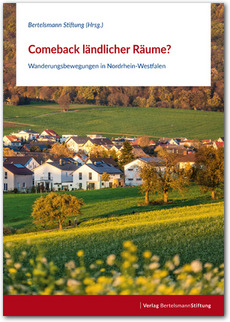Open data are most useful when they are easily accessible – by public administrators, researchers, civil society organizations and other stakeholders. This is precisely where the Wegweiser Kommune (Community Roadmap) comes in. The portal provides numerous indicators as open data on various topics, such as demographic change, labor market developments, education, sustainability and social conditions. The portal’s open licenses make it possible for the data to be widely used – by municipalities, civil society stakeholders, academics and the media. The result is more visibility, more impact and more benefit for everyone.
![[Translate to English:] Deutschlandkarte mit Finger](/fileadmin/files/_processed_/f/d/csm_Fotolia_98926123_X-Duplex_ST-LK_01_22fef8956b.jpg)
© vege / Fotolia.com
Data partnerships: Using data for the common good
How can we publish and use data in a way that benefits everyone – local authorities, civil society and our own projects? The foundation is pursuing precisely that goal: helping create a data ecosystem which serves the common good. A first data partnership now exists between its Wegweiser Kommune (Community Roadmap) project and Bavaria’s open data portal.
Wegweiser Kommune: Open data
A practical example: cooperation with Bavaria
The Community Roadmap’s cooperation with Bavaria’s open data portal is one example of a successful data partnership: Its population forecasts through 2040 for all Bavarian municipalities with at least 5,000 inhabitants are now linked to open.bydata. The first step was to create metadata descriptions that can be accessed through the Bertelsmann Stiftung’s in-house metadata portal (BeStData). Once described on BeStData, the relevant information can be transferred automatically when updates occur. Eventually, the Data Atlas for Civil Society will be the central platform for making open data from civil society discoverable externally. Other ideas for data partnerships are already in development.
Open data are most valuable when they are easy for everyone to find and use – like the datasets from Community Roadmap on open.bydata. That’s transparency with an impact
Maximilian Melle, Product Owner open.bydata
Migration: more people, new patterns
The number of people moving to Germany has increased significantly over the last 30 years – especially since 2010. Not only are more people coming to the country, their backgrounds have also changed: Immigrants today are more commonly families with children, or older people. The traditional image of young, single immigrants coming to work is now only part of the picture.
Moreover, the new arrivals are more evenly distributed across Germany’s states. There used to be major differences. Today, almost all of the country’s regions benefit from immigration, especially the major cities, which have the highest “net migration rates” (the difference between people moving in and moving out per 1,000 inhabitants).
Data Atlas for Civil Society: Who has what data – and where?
Transparency starts with findability. We’re using the Data Atlas for Civil Society to provide guidance. That is where civil society organizations and initiatives can share their own data or find datasets from other organizations. The atlas serves as a metadata portal. That means the data are described according to set standards, making them easier to find. Our goal is to make as many datasets from civil society as possible visible and useable in the coming months.






